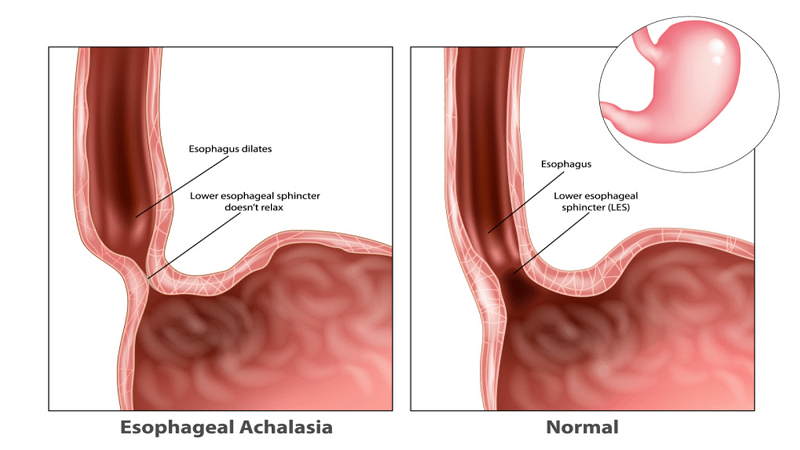Achalasia Cardia
Treatments
Achalasia Cardia
Achalasia Cardia is a rare disorder affecting the esophagus, which is the tube that carries food from the mouth to the stomach. In achalasia, the muscles of the esophagus fail to relax properly, leading to difficulty in swallowing (dysphagia), regurgitation of food, chest pain, and weight loss.
Symptoms

Dysphagia
Difficulty swallowing both solids and liquids.

Regurgitation
Food or liquid may come back up the esophagus.

Chest pain
Pain or discomfort in the chest, often behind the breastbone.

Weight loss
Due to difficulty eating and swallowing.
Diagnosis
Barium swallow:
A special X-ray test where you swallow a barium solution, allowing doctors to see the esophagus more clearly.
Esophageal manometry:
Measures the pressure inside the esophagus and the coordination of muscle contractions.
Endoscopy:
A flexible tube with a camera is inserted into the esophagus to visually inspect it.
Treatment

Medication
Medications like calcium channel blockers or nitrates can help relax the muscles of the esophagus, easing symptoms. However, they may not be effective for everyone.

Balloon dilation
A procedure where a balloon is inserted into the esophagus and inflated to stretch the narrowed area, helping to improve swallowing.

Botulinum toxin (Botox) injection
Injecting Botox into the lower esophageal sphincter can help relax the muscles temporarily, providing relief from symptoms. However, the effects are not long-lasting and may need to be repeated.

Surgery
If other treatments are ineffective, surgery may be recommended. The most common surgical procedure for achalasia is called a Heller myotomy, where the lower esophageal sphincter muscles are cut to allow easier passage of food into the stomach. This can be done through open surgery or minimally invasive techniques like laparoscopy.

Per-oral endoscopic myotomy (POEM)
A newer minimally invasive procedure where an endoscope is used to create a tunnel in the lining of the esophagus and the muscle layers are cut to relieve the obstruction. This technique has shown promising results and faster recovery compared to traditional surgery.
Lifestyle and Dietary Management
Eating habits:
Eating smaller, more frequent meals and chewing food thoroughly can help ease swallowing difficulties.
Dietary adjustments:
Avoiding foods that are difficult to swallow or cause discomfort, such as tough meats, dry bread, and carbonated drinks.
Posture:
Some people find that adopting certain positions, such as sitting upright or leaning forward while eating, can make swallowing easier.
Elevation of the head:
Sleeping with the head elevated can help prevent regurgitation during the night.



